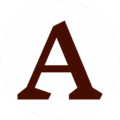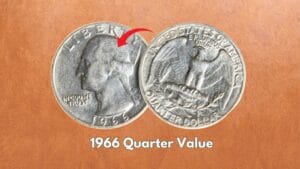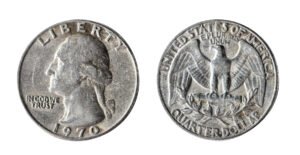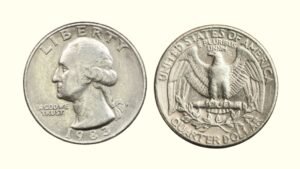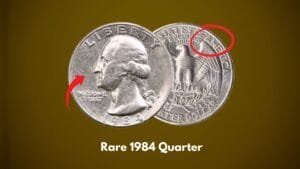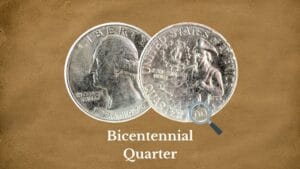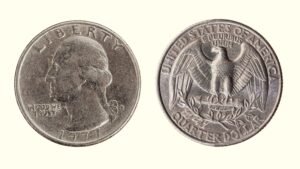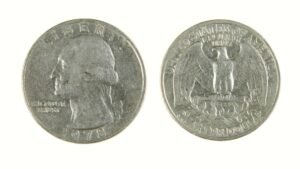Quarters may seem like ordinary pocket change, but some of these 25-cent coins can be worth thousands or even millions of dollars today. For instance, a quarter from 1901 was bought for over $327,750 at an auction. And this is one of many such collectible quarters!
In this list, I will show the most valuable quarters to find in circulation plus discontinued quarters that sold for mind-boggling six to seven figure prices!

10 Most Valuable Quarters in Circulation Today!
1. 1932-D Washington Quarter

The 1932-D was a part of the first release of the Washington quarters, which replaced the Standing Liberty series. It was minted in Denver in extremely low numbers of only 436,800, one of the lowest of the early Washington quarters, making it highly rare and valuable today.
How to Identify It: It features Washington’s portrait on the obverse and an eagle design with a “D” mint mark on the reverse.
Highest Auction Price: Realised $143,750 at Bowers & Merena Auctions in April 2008.
Average Value: $50 (FR2) to $90,000 (MS66) depending on grades
2. 1932-S Washington Quarter
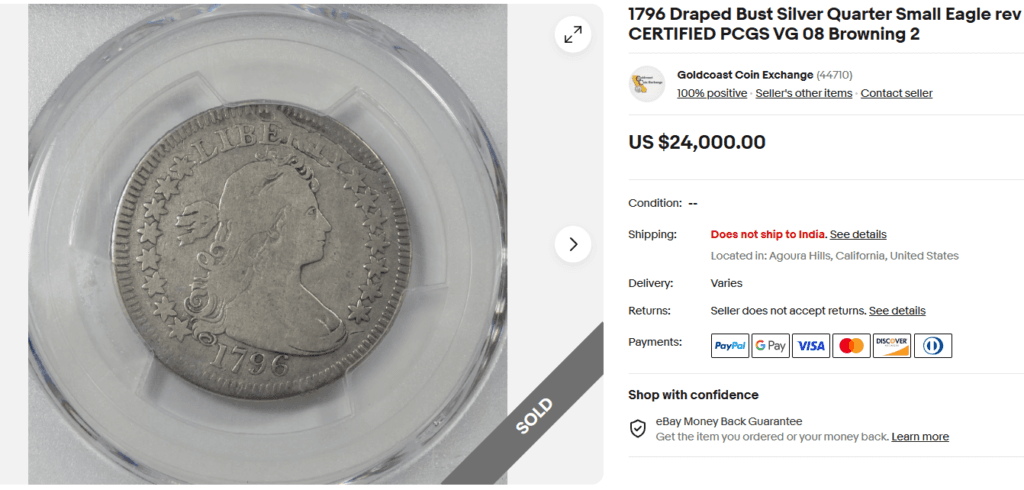
With an even lower mintage of 408,000 coins, the San Francisco variety of the first Washington quarters becomes one of the rarest quarters today. However, despite the lowest mintage, it’s slightly less valuable than the 1932-D.
How to Identify It: Standard Washington quarter design with an “S” mint mark on the reverse below the wreath.
Highest Value in Auction: Sold for $45,500 for a perfect Mint State 67 example on David Lawrence Auction.
Average Value: $50 (P1) to $46,000 (MS66) depending on grades
3. 1950-S/D Washington Quarter (FS-021/Overmint mark)

This rare variety of the 1950 Washington Quarter was created when a San Francisco mint mark punch was impressed over a previously punched Denver mint mark. It’s an unusual error clearly visible under 5x magnification.
The variety wasn’t documented until the 1960s when most examples had already experienced wear.
How to Identify It: Under magnification, remnants of a D mint mark are visible underneath and to the left of the S. Look particularly at the lower curve of the S, where the straight portion of the D is often visible.
Highest Value in Auction: $16,450 for MS67 example on Heritage Auctions
Average Value: $100 (VF30) to $10,000 (MS67) depending on grades
4. 1950-D/S Washington Quarter (FS-022/Overmint mark)

This is similar to the S/D variety but in reverse—a Denver mint mark punched over a San Francisco mint mark. Unlike many varieties discovered decades later, this was noted in the early 1950s only.
How to Identify It: Remnants of an S mint mark are visible under the D mark. The curved elements of the S often appear on either side of the D’s vertical stroke.
Highest Value in Auction: An MS67 example sold for $29,375 in 2013 on Heritage Auctions.
Average Value: $45 (F15) to $30,000 (MS67)
5. 2004-D Wisconsin State Quarter (Extra Leaf)
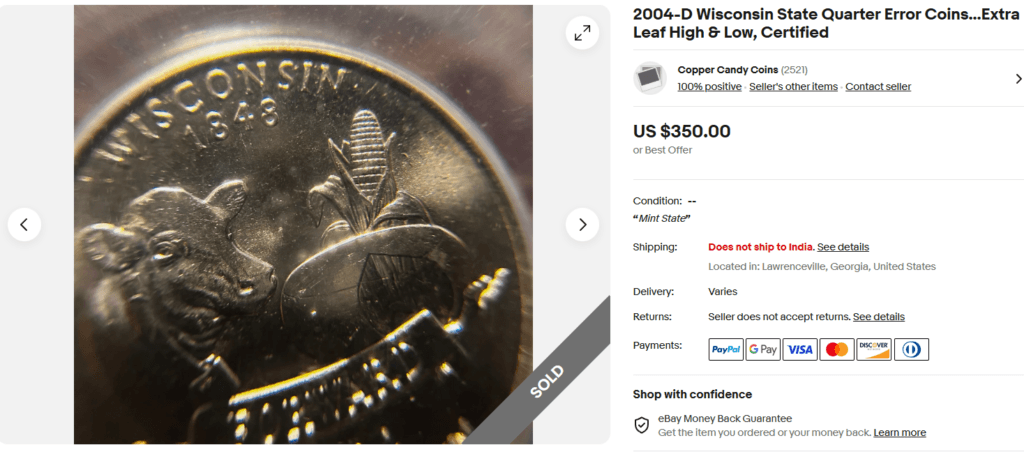
Released as part of the State Quarters Program, this error variety arose from damage to the die that created what appears to be extra leaves on the corn stalk in the 2004 Wisconsin quarter design. The normal design has no leaves in these positions.
This variety has two more sub-varieties: “High Leaf” (extra leaf pointing upward) and “Low Leaf” (extra leaf pointing downward). Generally, the Low Leaf variety fetches higher returns.
How to Identify It: Standard Wisconsin quarter reverse with either an extra high leaf (pointing up or down) on the left side of the corn stalk.
Highest Value in Auction: An MS67 “High Leaf” example sold for $6,000 on Heritage Auctions in 2010.
Average Value: $50 (AU50) to $1,500 (MS67) depending on grades
6. 1943 Washington Quarter Double Die Obverse

This rare 1943 Washington Quarter error was created when the die received multiple impressions from the hub at slightly different angles during manufacture. Unlike most quarters, this one features strong doubling visible even to the naked eye, making it among the most dramatic doubled dies in the Washington quarter series.
How to Identify It: Look for doubling on “LIBERTY,” especially the “B” and “E,” and in “IN GOD WE TRUST,” particularly the “GOD” and “TRUST.” The date also shows clear doubling, particularly in the “3” and “4.”
Highest Value in Auction: $22,250 for MS67 example David Lawrence RC in 2020
Average Value: $500 (XF45) to $20,000+ (MS67)
7. 2005-P Minnesota Doubled-die Quarter (Extra Tree)

This rare quarter was produced in 2005 when a doubled die was used to strike Minnesota quarters. The doubling appears in the design as what collectors describe as an “extra tree” in Minnesota’s “Land of 10,000 Lakes” design.
How to Identify It: Look for an extra tree or doubling in the tree line on the right side of the state outline. The variety shows strongest doubling in the evergreen trees at about the 2 o’clock position on the state outline.
Average Value: $40 (Circulated) to $700 (MS67)
8. 1964 D Washington Quarter (MS68)
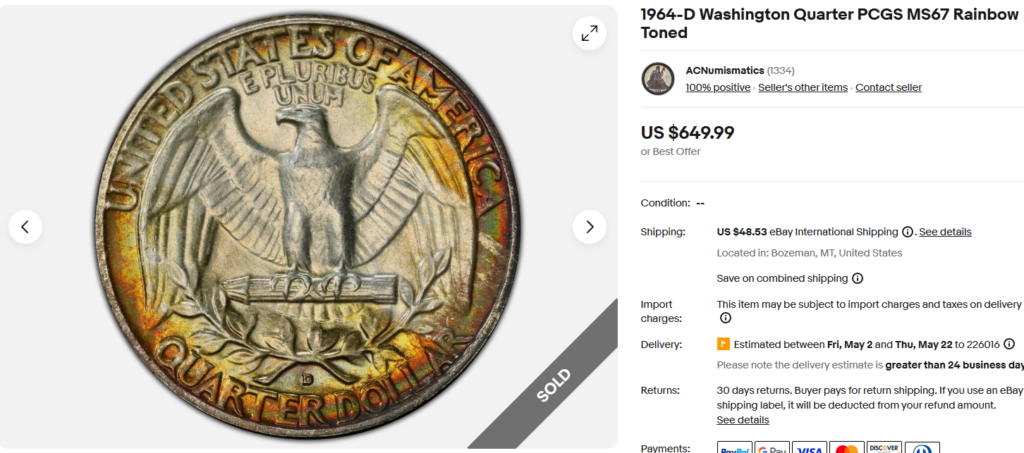
The 1964 silver quarter was minted just before the U.S. government switched to copper-nickel compositions for quarters, making it the last year of pure silver quarters. The Denver-minted variety of this quarter dollar, especially in high grades like MS68 is quite rare and valuable today.
How to Identify It: It will have “90% Silver” content, and the coin will be a standard Washington quarter design. Also, it features standard quarter design with D mint mark on reverse.
Highest Auction Value: $38,400 for MS68 example on Stack’s Bowers in 2021
Average Value: $40 (Circulated) to $700 (MS67)
9. 1995 Washington Quarter Double Die Obverse

This Doubled Die Obverse variety is a part of a well-known 1995 quarter error series where the obverse features a doubled image. Although commonly found, this error can be valuable in pristine condition, particularly in Mint State-69 grade or higher.
How to Identify It: Look for doubling most notably in the word “LIBERTY.”
Highest Auction Value: An MS69RD example realized $5,053 on Heritage Auctions in 2017.
Average Value: $20 (MS64) to $4,500(MS69)
10. 1983-P Quarter Overstruck on an Amusement Token
This remarkable quarter coin was produced in 1983 when the Washington design was struck on an amusement token instead of a coin planchet. This variety comes from the Philadelphia Mint and is extremely rare to find!
It’s an exceptionally rare 1983 quarter error with only a handful of confirmed examples existing. Most show partial designs from both the quarter and the token.
How to Identify It: Partial designs from the underlying token are visible beneath the Washington quarter design, especially when viewed at an angle under good lighting.
Highest Value in Auction: $15,862 for MS65 example on Heritage Auctions in 2014
Most Valuable Quarters Ever Sold!
The following quarters are not in circulation anymore, and that’s what makes them even rarer and precious.
11. 1796 Draped Bust Quarter
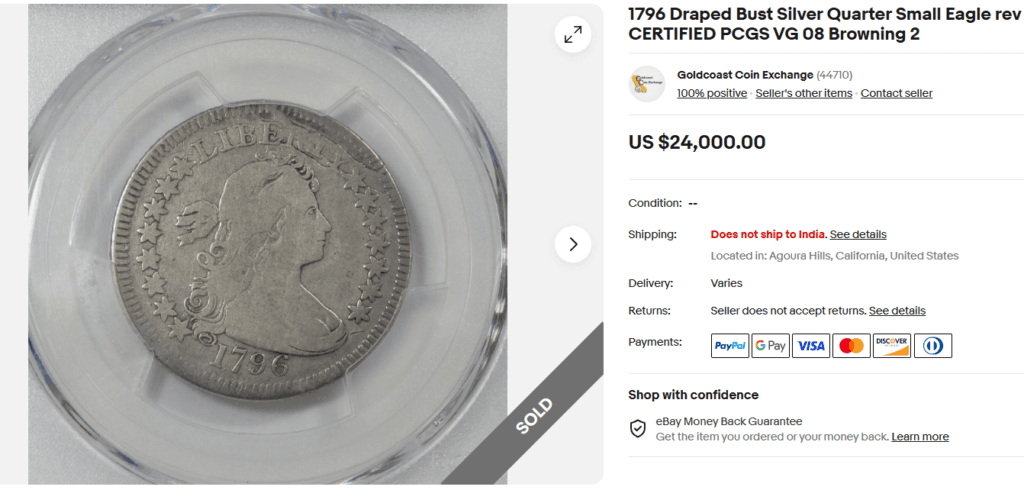
This is the very first quarter ever produced by the U.S. Mint, minted for only one year in 1796 before production paused until 1804. Only about 6,000 were struck. This antique quarter coin is extremely valuable due to very low mintage, and few surviving specimens.
How to Identify It: Features the Draped Bust design with Liberty facing right on the obverse, and a small eagle on the reverse. No mint mark as all were made in Philadelphia. All varieties are rare, with the B-2 variety (Low 6 in date) being the scarcest.
Highest Auction Price: Sold for $1,740,000 at Heritage Auctions in January 2022.
Average Value Today: $3,000 to $150,000 depending on condition and provenance.
12. 1804 Draped Bust Quarter

The 1804 Draped Bust quarter is one of the most famous coins in American numismatic history. It was part of a small mintage produced during a transition between coin designs. This year’s issue was resumed after an eight-year hiatus, with only 6,738 coins.
How to Identify It: The obverse shows a bust of Liberty, with the reverse featuring an eagle with a shield. The date “1804” is clearly visible.
Highest Auction Value: An MS65 example sold for $345,000 on Heritage Auctions in 2011.
Average Value Today: $1,500 (P1) to $6,000 (MS64) depending on the condition.
13. 1827 Capped Bust Quarter

The 1827 quarter was not intended for circulation but produced as proof coins for collectors. It was created during a period when the Mint was refining its production techniques under Chief Engraver William Kneass.
These quarter coins are extremely rare today with only 9 confirmed genuine examples to exist.
How to Identify It: Features the Capped Bust design with Liberty facing left and a stronger strike than circulated coins.
Highest Value in Auction: A Proof-66+ Cameo example sold for $705,000 on Stack’s Bowers in 2009. A standard PR-65 specimen sold for $444,000 on Heritage Auctions.
Average Value: $588,000 (PR65 Cameo) to $705,000 (PR66+ Cameo); $125,000 (PR63) to $444,000 (PR65)
14. 1901-S Barber Quarter
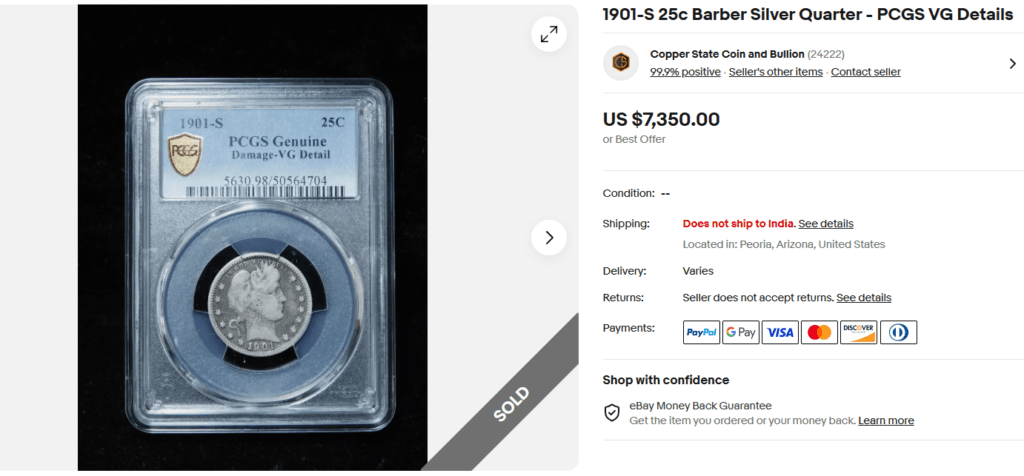
Designed by Chief Engraver Charles E. Barber, the 1901-S quarter had the lowest mintage of any regular-issue Barber quarter—only 72,664 pieces. Most production focused on other denominations, leaving the 1901-S quarter with a surprisingly low mintage.
Most examples of this quarter dollar entered circulation and were heavily used, making high-grade specimens particularly valuable. Most surviving examples are heavily worn.
How to Identify It: Features the Barber design with Liberty facing right on the front and an eagle with shield and olive branch, with an “S” mint mark on the reverse.
Highest Value in Auction: An MS68 example sold for $550,000 at Superior Galleries in 1990 and another example sold for $327,750 at Bowers & Merena in 2010.
Average Value: $1,500 (P1) to $550,000 (MS68)
15. 1823/2 Capped Bust Quarter (Overdate)
This rare overdate variety was created when the Mint reused an 1822-dated die by punching an “1823” over it to extend its useful life. The 1823 quarter is a significant rarity with most of the mintage apparently melted due to changes in silver content.
This quarter variety is extremely rare with only about 30-35 known examples across all grades. The only collectible 1823 quarter, as the “normal date” 1823 quarter is even rarer with just 5 known examples to exist.
How to Identify It: Under magnification (10x or higher), remnants of a “2” are clearly visible underneath the final “3” in the date. The overdate is most visible in the lower loop of the 3, where the curve of the 2 appears underneath.
Highest Value in Auction: An AU58 example sold for $246,000 on Stack’s Bowers Auction, while the Proof-64 variety sold for $396,560 on Heritage Auctions!
Average Value: $35,000 (G4) to $250,000 (MS58) and $138,000 to $396,000 (PR64)
Note: This article is intended for informational, educational, and entertainment purposes only. Some images are illustrative and may not represent actual brands, products, or related entities. All trademarks, product names, brand logos, packaging, and other intellectual property referenced remain the exclusive property of their respective owners. Any brand mentions or references are provided solely for descriptive and educational context and do not imply any formal or commercial association.


